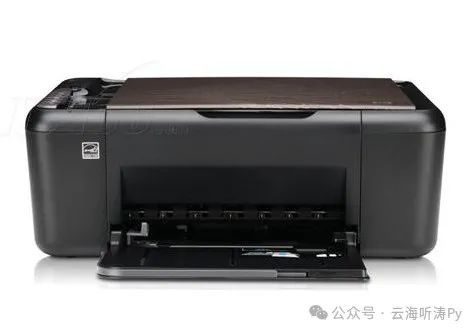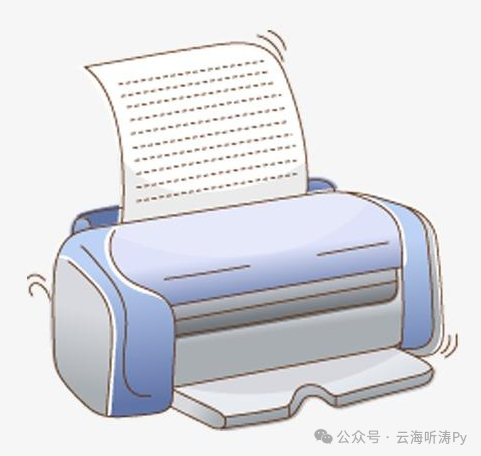1. C++’s Dominance in Driver Development

In the field of printer driver development, C++ is undoubtedly the “main force.” Its high performance allows printing tasks to be processed swiftly, even when faced with complex text and image layouts or high-resolution image printing, it can easily handle the task and quickly transmit data to the printer, significantly saving printing time.
For instance, when printing a design draft that contains numerous high-definition images, if the driver program is written in C++, it can efficiently process image data and quickly relay instructions to the printer, ensuring a smooth printing process that produces exquisite results in a short time. In contrast, if a less performant language were used, there could be transmission lags and slow printing, severely affecting efficiency.
The object-oriented features of C++ provide great convenience for driver development. Through encapsulation, it encapsulates various functional modules of the printer, such as print head control, paper transport, and cartridge management, into independent classes, making the code structure clear and easy to understand and maintain. When a printer malfunctions, developers can quickly locate the corresponding class to troubleshoot the issue. The features of inheritance and polymorphism greatly enhance code reusability; for printers of different models but similar functionalities, developers can inherit and extend existing classes, reducing redundant development workload, improving development efficiency, and easily adapting to future upgrades and changes in printer functionalities, laying a solid foundation for the continuous optimization of driver programs.
2. Key Points for Preparation Before Development

(1) In-depth Understanding of Printer Hardware
As the saying goes, “Know yourself and know your enemy, and you can fight a hundred battles without danger.” Before embarking on printer driver development, a comprehensive understanding of printer hardware characteristics is crucial. This is akin to familiarizing oneself with building materials before constructing a house; only by thoroughly understanding the printer’s “temperament” can one create a perfectly compatible driver program.
Printer port types vary widely, with common types including USB, parallel ports, and network ports. The data transmission speeds and methods differ vastly between these ports. USB ports are highly versatile and fast, making them convenient and efficient; parallel ports were once widely used but are now gradually fading away, though they can still be found in some older devices; network ports allow printers to easily connect to local networks, enabling multiple devices to share printing, greatly improving the utilization of office resources. Developers must master these ports and accurately configure the corresponding communication protocols in the driver program based on the supported port types of the printer, ensuring smooth data transmission, akin to selecting the most suitable transportation route for goods to avoid “traffic jams” and ensure efficient execution of printing tasks.
Resolution is one of the key indicators of printer print quality, determining the finesse of printed images and text. It is usually expressed in dpi (dots per inch); the higher the dpi value, the clearer and more realistic the print effect, revealing perfect details. For fields that demand high image quality, such as design and photography, high-resolution printers are essential; while for everyday office document printing, a relatively lower resolution can suffice, saving printing time and materials. When handling print tasks, the driver program must reasonably scale and render images and text according to the printer’s resolution characteristics, ensuring the printed product matches the expected effect perfectly. If the driver cannot adapt to the resolution, issues like blurred prints and distorted images may occur, akin to giving an unsuitable pair of glasses to a nearsighted person, making it difficult to see clearly.
Color mode is also an important characteristic of printer hardware. Common modes include black and white, color, as well as more professional CMYK mode (used for commercial printing, presenting rich colors through the mixture of cyan, magenta, yellow, and black) and RGB mode (commonly used for electronic displays, generating various colors through the mixture of red, green, and blue light). Different color modes are suitable for different printing needs; black and white mode is concise and cost-effective for printing text files, while color mode can add vibrant colors to photos and posters, bringing them to life. Developers need to set accurate color conversion algorithms in the driver based on the supported color modes of the printer, ensuring that the colors seen on the computer screen are accurately reproduced on the printed paper. Otherwise, severe color deviations may occur, turning originally vibrant flowers dull or transforming a blue sky and white clouds into a “hazy day.”
In addition to the aforementioned key characteristics, the printer’s paper handling capabilities, cartridge types, and printing speed are also critical. Paper handling capabilities include supported paper sizes (such as A4, A3, envelopes, etc.), paper thickness, and whether it supports automatic duplex printing or feeding methods (manual or automatic feeding); cartridge types involve cartridge capacity, color varieties, replacement methods, and whether single cartridge printing is supported; printing speed directly affects work efficiency, typically measured in pages per minute (ppm). Developers must be well-versed in these hardware details of the printer to fully leverage its advantages during driver development, avoid potential issues, and provide users with a smooth and high-quality printing experience.
(2) Setting Up an Appropriate Development Environment
To do a good job, one must sharpen their tools first. Setting up a suitable development environment is a key step in starting the printer driver development journey. Here, we take the Windows system as an example to detail how to set up the environment.
First, install Visual Studio. This is a powerful assistant for C++ development, offering a wealth of features and tools that make coding and debugging efficient and easy. Go to the official Microsoft website to download the Visual Studio installer, and during installation, remember to select the “Desktop development with C++” workload, which will install the core components needed for C++ development, such as the compiler and debugger. Once installed, opening Visual Studio feels like entering a “magical workshop” of code, ready to showcase your skills.
Next, install the Windows SDK (Software Development Kit). It includes a series of library files, header files, tools, and sample code used for developing Windows applications, serving as a “bridge” for interaction with the underlying Windows system. Similarly, find the corresponding Windows SDK version on the official Microsoft website for download and installation. The installation path can be set according to personal preferences, but be sure to avoid including Chinese or special characters to prevent unnecessary troubles later.
After installing these basic tools, careful project environment configuration is also needed. Create a new Win32 project, and in the project properties, find the “VC++ Directories” option, where you can add the necessary include directory paths, allowing the compiler to find the header files we reference smoothly, such as the previously mentioned header files closely related to printer operations like <windows.h>, <windef.h>, <winspool.h>, and <wingdi.h>. At the same time, add the corresponding library file paths in the “Library Directories” to ensure the linker can find the required library files, such as Advapi32.lib and Kernel32.lib. These library files are treasures containing system-level APIs that help us communicate with system services, and controlling the printer relies on them. Once configured, the development environment is like a finely tuned racing car, ready to take off, just waiting for us to step onto the driver development track.